
Sanchaung: The Heartbeat of Yangon
Discover the vibrant and authentic heartbeat of Yangon in Sanchaung, where culture, cuisine, and history come together to offer an unforgettable experience.
Sanchaung, a dynamic and vibrant neighbourhood in Yangon, Myanmar, offers an authentic taste of Burmese urban life. Known for its bustling streets, Sanchaung is a mosaic of culture, history, and modernity. Walking through its lively markets, you will discover a blend of traditional handicrafts and contemporary goods, reflecting the neighbourhood's unique charm. The food scene in Sanchaung is a culinary adventure waiting to be explored. From street vendors selling delicious local snacks to charming cafes and restaurants offering both Burmese and international cuisines, there's something to satisfy every palate. Make sure to try the local tea shops for a refreshing cup of Myanmar milk tea, a true cultural experience. Sanchaung is also rich in history, with several landmarks and temples that tell the story of Yangon’s past. Visit the nearby Shwedagon Pagoda, one of Myanmar’s most iconic religious sites, and immerse yourself in the spiritual atmosphere. The neighbourhood's diverse population adds to its vibrant and welcoming character, making it a must-visit for anyone looking to experience the true essence of Yangon.
Local tips in Sanchaung
- Visit the local markets early in the morning for the freshest produce and unique local goods.
- Try the street food but make sure it's from a busy stall to ensure freshness and quality.
- Wear comfortable shoes as Sanchaung is best explored on foot.
- Learn a few basic Burmese phrases; locals appreciate the effort and it can enhance your experience.
- Carry cash as many small vendors and eateries do not accept credit cards.
Iconic landmarks you can’t miss
Koe Htat Kyee Pagoda
Discover the tranquility and beauty of Koe Htat Kyee Pagoda, a must-visit cultural gem in the heart of Yangon, Myanmar.
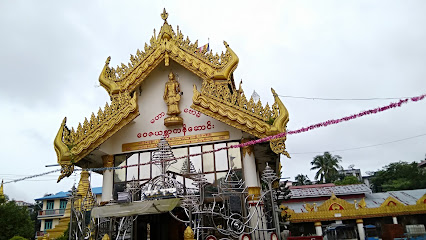
U Thant House
Explore U Thant House, a serene museum in Yangon, unraveling the legacy of Myanmar's influential figure and the first Asian UN Secretary-General.
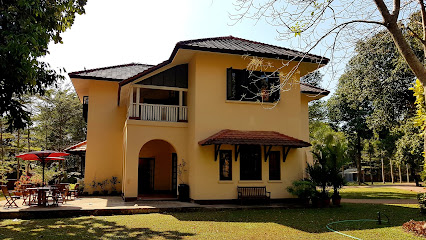
Bogyoke Statue
Explore the Bogyoke Statue in Yangon, a captivating landmark honoring Myanmar's Father of the Nation amidst beautiful gardens.
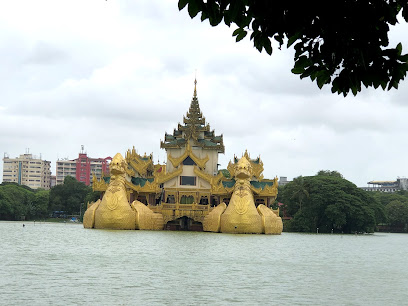
Sanchaung Garden Residence
Experience the tranquility of Sanchaung Garden Residence, a perfect blend of modern comfort and serene gardens in the heart of Yangon, Myanmar.
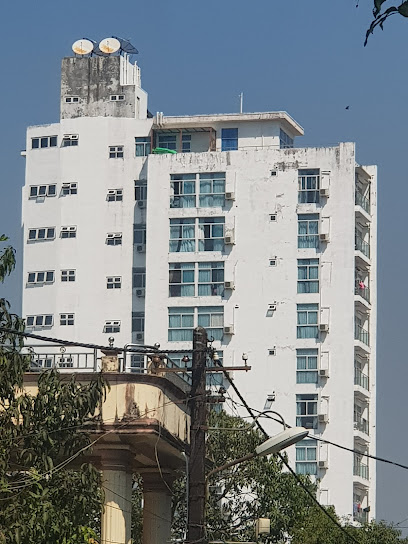
Hon. Lim Chin Tsong's OBE Palace
Explore the majestic Hon. Lim Chin Tsong's OBE Palace in Yangon, a historical landmark showcasing colonial architecture and rich cultural heritage.
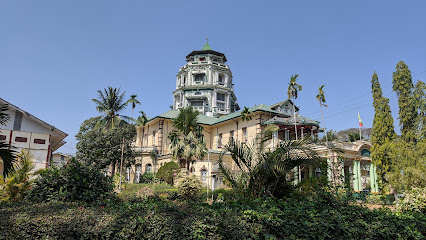
Yangon/Rangoon War Cemetery
Explore the serene Yangon War Cemetery, a poignant tribute to the brave soldiers of World War II amidst the lush greenery of Myanmar's capital.
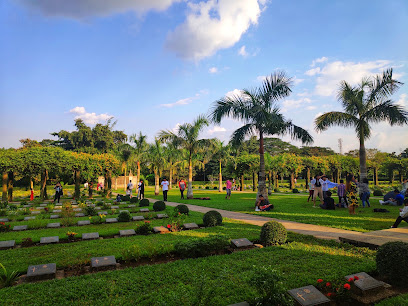
Elephant Fountain
Explore the majestic Elephant Fountain in Yangon, a stunning blend of art, culture, and serenity in the heart of Myanmar's vibrant city.
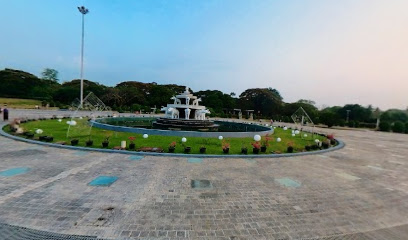
Yangon, Myanmar
Explore Yangon, the heart of Myanmar, where ancient traditions meet modern vibrancy, offering a unique travel experience.

မြသိန်းတန်ရုပ်ပွားတော်မြတ်
Discover the serene splendor of Yathetgyi Pagoda, a cultural treasure in the heart of Yangon, offering breathtaking views and spiritual tranquility.

Arakan Buddhist Hall ရခိုင်တန်ဆောင်း
Discover the cultural essence of Myanmar at Arakan Buddhist Hall, a tranquil haven in Yangon rich in history and spiritual significance.
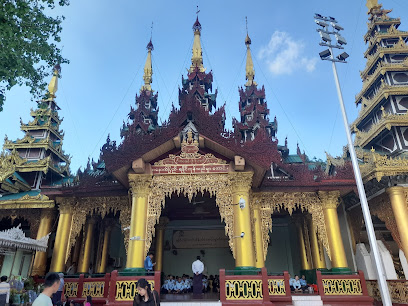
Unmissable attractions to see
Maha Satkya Atulamanaung Ngarhtatgyi
Explore the enchanting Maha Satkya Atulamanaung Ngarhtatgyi, a majestic pagoda in Yangon that showcases the rich spiritual heritage of Myanmar.
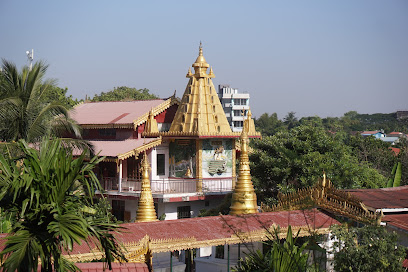
Bogyoke Aung San Museum
Explore the Bogyoke Aung San Museum in Yangon – a historical treasure showcasing the life of Myanmar's independence hero.

Elephant Fountain
Discover the serene beauty of the Elephant Fountain in Yangon, a captivating tourist attraction adorned with majestic elephant sculptures and tranquil surroundings.
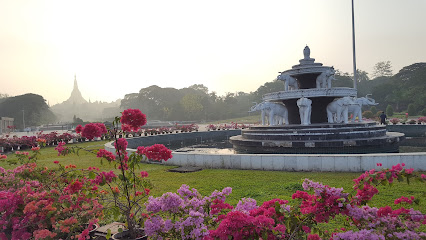
Essential places to dine
Win Star
Experience authentic barbecue and Chinese cuisine at Win Star in Yangon – where flavors meet tradition in every bite.
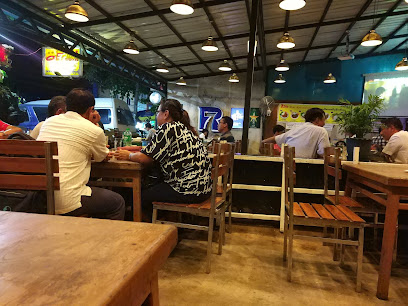
The Lord Restaurant (San Chaung)
Experience authentic barbecue flavors at The Lord Restaurant in San Chaung - a culinary gem in Yangon.
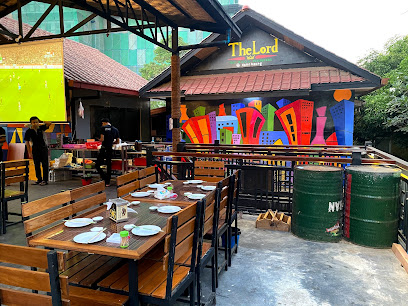
Loi Sam Sip Restaurant
Discover authentic Myanmar flavors at Loi Sam Sip Restaurant in Yangon – where every dish tells a story.
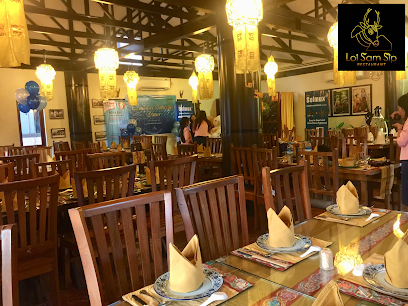
777 ၇၇၇
Experience authentic Myanmar cuisine at 777 ၇៧၇ in Yangon—where traditional flavors meet modern dining.

Swel Restaurant
Experience the vibrant flavors of Myanmar at Swel Restaurant in Yangon – where every dish tells a story.
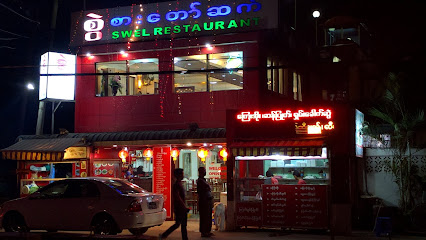
Danuphyu Daw Saw Yee Myanmar Restaurant
Savor authentic Myanmar cuisine at Danuphyu Daw Saw Yee Restaurant in Yangon—where every dish is a journey into local flavors and traditions.
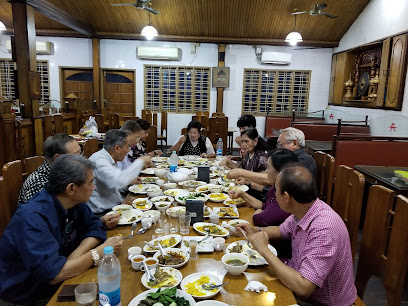
Sumlut Sisters BBQ
Discover the rich flavors of Burmese barbecue at Sumlut Sisters BBQ in Yangon - where every dish tells a story.
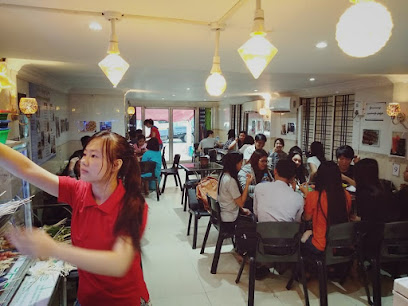
ဆောင်းလေပြေရှမ်းထမင်းဆိုင်
Experience authentic Asian cuisine at ဆောင်းလေပြေရှမ်းထမင်းဆိုင် in Yangon - where every dish tells a story.

Sunset - Mala & BBQ
Discover authentic Burmese flavors at Sunset - Mala & BBQ, where every meal is a celebration of culinary artistry.
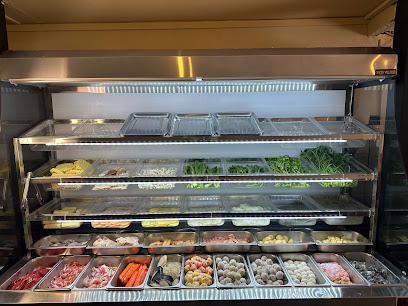
A Kyu Yi Chinese Restaurant
Experience authentic Chinese flavors at A Kyu Yi Restaurant in Yangon, where traditional cuisine meets warm hospitality.

Markets, malls and hidden boutiques
Spirits Fashion Accessories
Explore Spirits Fashion Accessories in Yangon for unique, handcrafted pieces that celebrate local culture and elevate your style.
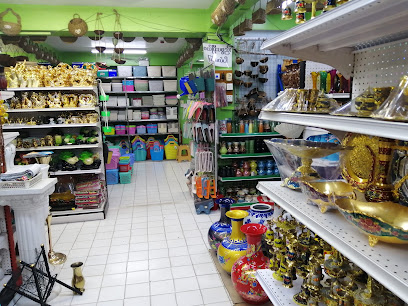
Pomelo for Myanmar
Explore the heart of Myanmar's craftsmanship at Pomelo for Myanmar, where every souvenir tells a story of rich culture and artistry.
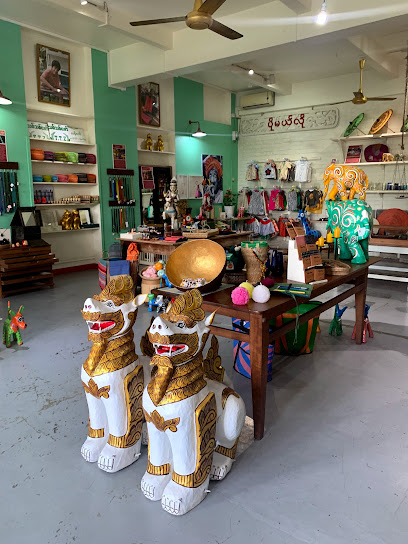
Yangoods Shan Gone Boutique
Explore Yangoods Shan Gone Boutique: Your destination for unique fashion accessories and gifts that capture the essence of Myanmar's artistry.

Yangoods Head Office
Explore Yangoods Head Office in Sanchaung - your destination for unique gifts and authentic Myanmar handicrafts.
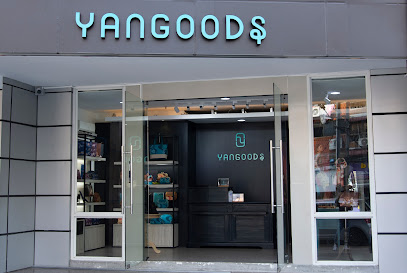
The Gift Shop
Explore The Gift Shop in Yangon for unique souvenirs, local crafts, and delightful toys that embody the spirit of Myanmar's culture.

Eureka
Discover unique clothing and handcrafted gifts at Eureka, a charming shop in Yangon’s Sanchaung Township that celebrates Myanmar's culture.

မြန်မာ့အလှ - ကျောက်စီပန်းချီကားလုပ်ငန်း
Explore the rich artistic heritage of Myanmar at the Kyauk Si Painting Workshop in Yangon, where tradition meets creativity.

Capital-A Street Wear ( Shop-2 )
Discover the essence of modern street fashion at Capital-A Street Wear, Yangon’s trendy clothing store for unique styles and vibrant vibes.
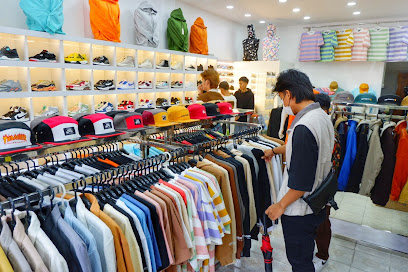
Shoon's Studio
Explore the charm of Shoon's Studio, a unique gift shop offering handcrafted treasures and local artistry that encapsulate the spirit of your travels.

Yangon
Discover the enchanting blend of history, culture, and spirituality in Yangon, Myanmar's vibrant former capital.

Essential bars & hidden hideouts
Friend's Fusion Sports Bar
Experience the thrill of sports in Yangon at Friend's Fusion Sports Bar, where delicious food and an exciting atmosphere await every visitor.
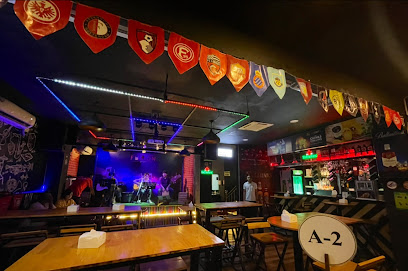
Tony Bar
Discover the vibrant nightlife of Yangon at Tony Bar, where great drinks and a friendly atmosphere await you!
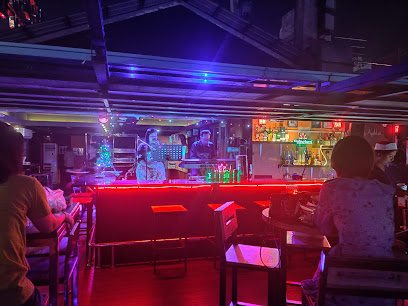
Chris Bar
Experience the vibrant nightlife at Chris Bar in Yangon, where local flavors and lively entertainment create unforgettable memories.
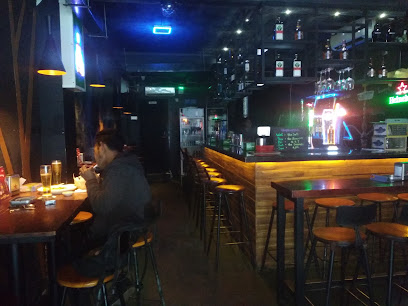
London Pub
Discover the charm of London Pub in Yangon, where Asian cuisine meets European flair in a vibrant and welcoming atmosphere.
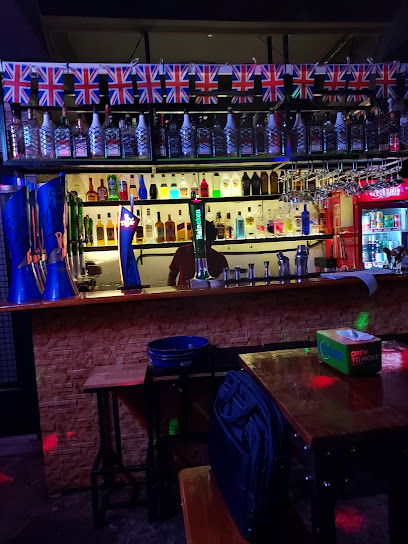
BAR4U
Experience the vibrant nightlife at BAR4U in Yangon, a cozy bar perfect for relaxation and socializing with an extensive drink menu.
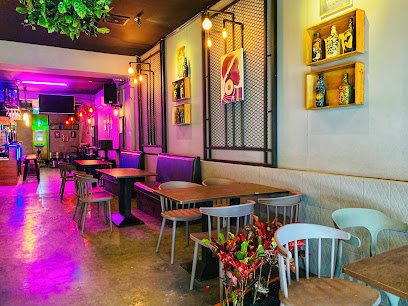
Space Ace Bar
Discover the lively ambiance at Space Ace Bar, where great drinks and vibrant nightlife meet in the heart of Yangon.
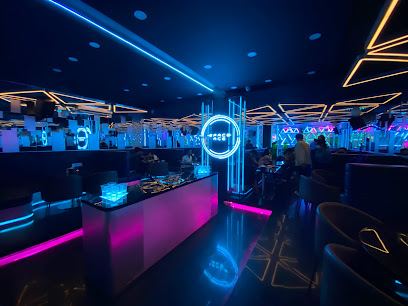
Your Name Beer Pub
Experience the lively atmosphere of Your Name Beer Pub, a must-visit spot in Yangon for beer lovers and cultural enthusiasts alike.
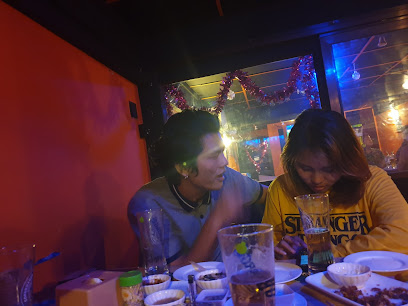
Bliss Bar
Experience the vibrant nightlife of Yangon at Bliss Bar, your go-to spot for cocktails and relaxation in a lively atmosphere.

ညကျောင်း
Enjoy a vibrant nightlife experience at ညကျောင်း, a lively bar in Yangon perfect for unwinding and socializing.
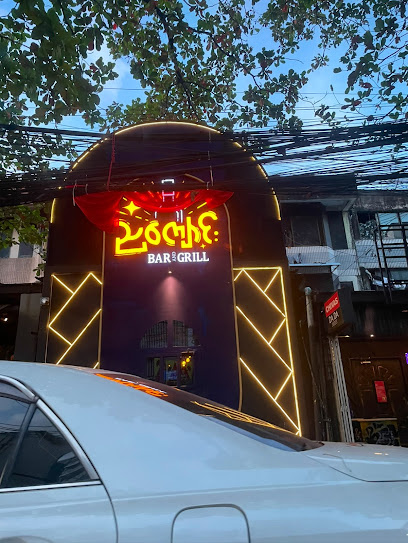
Corner bar
Discover the vibrant nightlife of Yangon at The Corner Bar, where local brews meet a welcoming atmosphere in the heart of Sanchaung.

Local Phrases
-
- Helloဟန်လျို့
[hanlui] - Goodbyeဘယ်ရွက်
[be ywet] - Yesဟုတ်ကဲ့
[hote kae] - Noမဟုတ်
[ma hote] - Please/You're welcomeကျော်မွေးရယ်
[kyaw me yae] - Thank youကျော်တို့လို့
[kyaw tu loe] - Excuse me/Sorryကျော်မွေးခဲ့ရယ်
[kyaw me kaer yae] - How are you?ဘယ်ဘက်လဲ
[be hkae lae] - Fine. And you?အိမ်မှာ ဘယ်ဘက်လဲ
[in hma be hkae lae] - Do you speak English?အင်ဇာဘက်လဲ
[inza be lae] - I don't understandမဟုတ်လဲ
[ma hote lae]
- Helloဟန်လျို့
-
- I'd like to see the menu, pleaseမီနုလုပ်ခဲ့လို့ ကျော်မွေးရယ်
[minu lup kaer loe kyaw me yae] - I don't eat meatဥပမာဆို့ မဟုတ်လဲ
[upama hote lae] - Cheers!ကျော်လွန်း
[kyaw luun] - I would like to pay, pleaseငှက်အားခဲ့လို့ ကျော်မွေးရယ်
[hnae a kaer loe kyaw me yae]
- I'd like to see the menu, pleaseမီနုလုပ်ခဲ့လို့ ကျော်မွေးရယ်
-
- Help!ကျော်နှာ
[kyaw hna] - Go away!လှိုင်းခဲ့
[hloin kaer] - Call the Police!ရုံးဆို့လို့ရယ်
[yone hote loe yae] - Call a doctor!အဆောက်လဲ့ရယ်
[ahawk lae yae] - I'm lostငှက်ရယ်
[hnae yae] - I'm illငှက်ဆွဲလဲ
[hnae htwae lae]
- Help!ကျော်နှာ
-
- I'd like to buy...မီမဲအားခဲ့
[mima a kaer] - I'm just lookingမီမှာလဲ
[mi hmar lae] - How much is it?အစားဘယ်လဲ
[asah be lae] - That's too expensiveဒါအစားနဲ့ပြောင်
[da asah nae pyaung] - Can you lower the price?စျေးစနဲ့မှာလဲ
[seisan nae hmar lae]
- I'd like to buy...မီမဲအားခဲ့
-
- What time is it?ဘယ်နော်လဲ
[be nae lae] - It's one o'clockတစ်နှစ်အလျပ်
[ta nhit alap] - Half past (10)ဆယ်လေးမှာ
[se lei hmar] - Morningမနက်
[mane] - Afternoonနေ့ထွက်
[ne htwe] - Eveningညနေ
[nyane] - Yesterdayမနေ့အဲ့
[mane ai] - Todayယနေ
[yane] - Tomorrowမနက်က
[mane k] - 1တစ်
[ta] - 2နှစ်
[nhit] - 3သုံး
[sone] - 4လေး
[lei] - 5ငါး
[nga] - 6ခြောက်
[hroak] - 7ခွေ
[hkwae] - 8ရှေ့
[hrae] - 9ကိုင်
[kuin] - 10တစ်ဆယ်
[ta se]
- What time is it?ဘယ်နော်လဲ
-
- Where's a/the...?ဘယ်လေးလဲ
[be lei lae] - What's the address?လိပ်စာလဲ
[lipsa be lae] - Can you show me (on the map)?စင်ကောက်ခဲ့ရယ်
[sanka kaer yae] - When's the next (bus)?နော်လည်းလဲ
[nae nya lae] - A ticket (to ....)လက်ဆီလုပ်
[lakhci lup]
- Where's a/the...?ဘယ်လေးလဲ
History of Sanchaung
-
Sanchaung's history is deeply intertwined with the colonial era of Myanmar, particularly during the British rule from the 19th century. As Yangon developed as a major port city, Sanchaung emerged as a residential area for civil servants and expatriates, featuring colonial architecture and infrastructure that reflect the urban planning of that time.
-
During World War II, Sanchaung, like the rest of Yangon, experienced significant turmoil. The Japanese occupation from 1942 to 1945 brought changes to the social fabric of the neighborhood. Many residents were impacted by the war, leading to a period of hardship, but also fostering a sense of resilience among the community.
-
Following Myanmar's independence in 1948, Sanchaung underwent rapid urbanization. The neighborhood saw an influx of people from rural areas seeking opportunities in the city. This migration contributed to a diverse cultural landscape, with various ethnic communities establishing their presence and creating a rich tapestry of traditions and practices.
-
Sanchaung is known for its vibrant community life and cultural diversity. The area is home to various places of worship, including Buddhist pagodas, churches, and mosques, reflecting the coexistence of different faiths. This cultural melting pot is evident in the local markets, festivals, and culinary offerings that showcase the region's rich heritage.
-
In recent years, Sanchaung has faced challenges associated with urbanization, including rapid development and infrastructure strain. However, efforts to preserve the neighborhood's historical sites and promote sustainable tourism are underway, aimed at maintaining the unique character of Sanchaung while accommodating its growing population.
Sanchaung Essentials
-
Sanchaung is easily accessible from other neighborhoods in Yangon. The neighborhood is located approximately 6 km from the city center, which can be reached via taxi or ride-sharing services like Grab. Public buses also connect Sanchaung with various parts of Yangon, with several routes operating frequently. The nearest train station is Yangon Central Railway Station, and from there, you can take a taxi or bus to Sanchaung.
-
Sanchaung is a well-connected neighborhood, making it easy to navigate. Public buses run frequently, and local taxis are readily available for short distances. The neighborhood is bike-friendly, and renting a bicycle can be a great way to explore. Walking is also a popular option, especially in the quieter residential areas.
-
Sanchaung is generally safe for tourists, but it's advisable to exercise caution, particularly at night. Areas near busy markets and train stations may experience petty crime such as pickpocketing. It’s best to avoid walking alone in poorly lit areas after dark and to keep valuables secured and out of sight.
-
In case of an emergency, you can contact local authorities by dialing 199 for police assistance or 192 for fire services. For medical emergencies, the nearest hospital is Yangon General Hospital. It is advisable to have travel insurance that covers medical expenses, and local pharmacies can provide over-the-counter medications for minor health issues.
-
Fashion: Do dress modestly, especially in religious sites. Avoid wearing shorts and sleeveless tops. Religion: Do show respect at temples; always remove your shoes and refrain from taking photos where prohibited. Public Transport: Do give your seat to the elderly or pregnant women. Don't eat or drink on public transport. Greetings: Do greet locals with a smile and a slight bow. Eating & Drinking: Do try local street food and accept invitations to meals. Don't waste food, as it is considered disrespectful.
-
To experience Sanchaung like a local, visit the bustling Sanchaung Market for fresh produce, snacks, and local delicacies. Engage in conversations with vendors and locals to learn more about their culture and daily life. Don’t miss the chance to try traditional Myanmar tea at local teahouses, where you can relax and soak in the atmosphere. Exploring the neighborhood on foot will also allow you to discover hidden gems, such as small temples and local art galleries.
Nearby Cities to Sanchaung
-
Things To Do in Kyaiktiyo
-
Things To Do in Hpa-An
-
Things To Do in Pyay
-
Things To Do in Ngapali
-
Things To Do in Mae Hong Son
-
Things To Do in Naypyidaw
-
Things To Do in Chiang Mai
-
Things To Do in Pai
-
Things To Do in Sukhothai
-
Things To Do in Kalaw
-
Things To Do in Inle Lake
-
Things To Do in Kanchanaburi
-
Things To Do in Bagan
-
Things To Do in Sittwe
-
Things To Do in Chiang Rai



